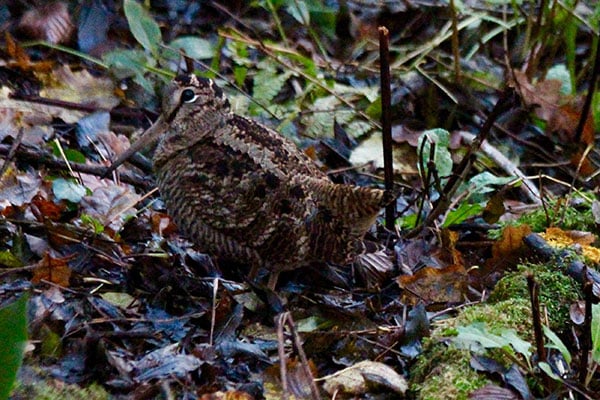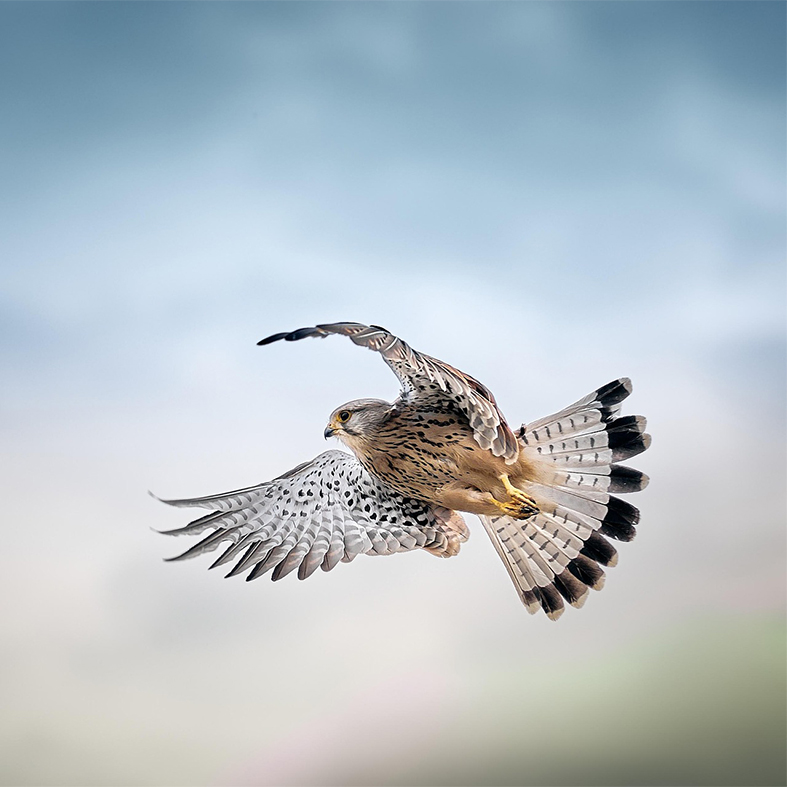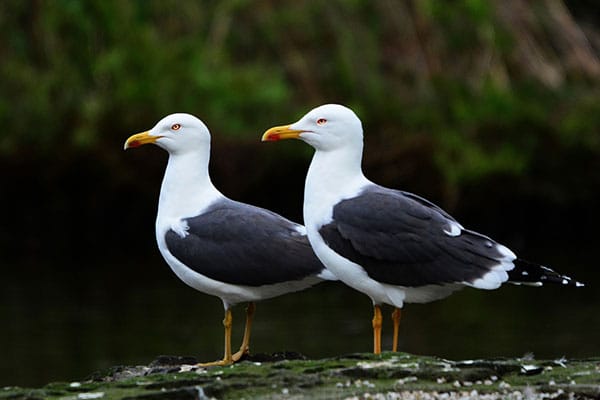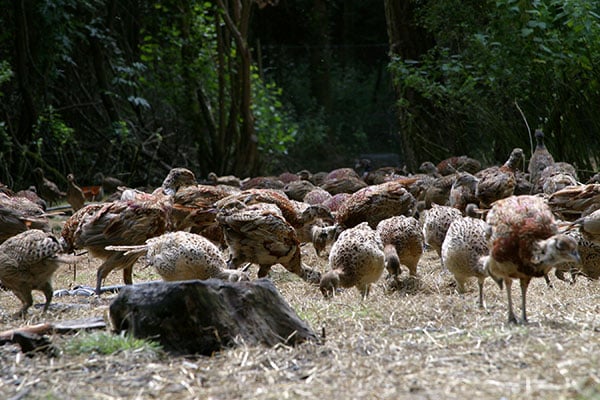
Learning more about breeding woodcock populations in Northern Ireland
BASC commissioned Erne Environmental to manage a network of volunteers to provide sufficient data to the National Breeding Woodcock Survey in 2023.
Get information on the legal shooting season for mammals and birds in the UK.
Apply for funding for your project or make a donation today
Comprehensive information and advice from our specialist firearms team.
Everything you need to know about shotgun, rifle and airgun ammunition.
Find our up-to-date information, advice and links to government resources.
Everything you need to know on firearms law and licensing.
All the latest news and advice on general licences and how they affect you.


Home » Science and research » Predator vs Predator: what we know about raptor competition and predation
The assemblage of raptors in the UK is changing. Some species, such as red kites (Milvus milvus) and common buzzards (Buteo buteo) have recently seen significant increases in their populations, whilst others such as goshawks (Accipiter gentilis) and common kestrel (Falco tinnunculus) appear to be suffering declines.
To better understand these ecological changes, BASC commissioned a rapid evidence assessment (REA) to investigate the impacts of intraguild predation and interference competition on bird of prey assemblages in the UK. REAs such as this one focus on a specific knowledge gap, collating and evaluating all of the available relevant information on that topic into report, and identify areas where further scientific research is needed to fill any remaining knowledge gaps. The findings of these reports can also inform best practice guidance and policy decisions, providing essential evidence to ensure such decisions are balanced and proportionate.
Competition between individuals of the same (intraspecific) or different species (interspecific) can occur for several reasons such as reliance on the same resources, sharing territories or nesting sites, as well as perceived threat . Sometimes this competition is portrayed as aggressive displays of behaviour, known as interference competition, where one individual will attempt to disrupt the chances of the others success/chances of survival. The competition can also go a step further when individuals of a species prey on their competitors to increase their own access to resources – this is known as intraguild predation.
The researchers looked at 510 dietary studies and 100 studies on raptor interactions and found that while 69% of European raptor species do prey on other raptors, the prey raptors only constituted around 1% of the predator raptors’ diet.
In the UK, raptors contributed a smaller percentage to the diets of other raptors than in central Europe, likely due to the lower species abundance and diversity in the UK resulting in a greater probability of intraguild competition. Within the UK the main raptor species predating on other raptors are goshawks, peregrine falcons and golden eagles, with common kestrel being the most common prey. If intraguild predation is intensive, it could lead to declines in the raptor prey species, however the evidence base for this is limited.
Aside from predatory interactions, other observed interactions included:
The drivers of these direct and indirect interactions are not clearly understood but could be caused by i) scarcity of prey, ii) opportunistic predation of smaller individuals, iii) a need to remove competitors or iv) a need to remove potential predators.
The impacts of predation or interference competition among raptors can be observed at an individual, population or community level. It can impact spatial distribution of raptors through avoidance behaviours or habitat selection, resulting in changes to subdominant raptor population densities and distributions. For example, aggressive interactions were found to impact subdominant species, such as common buzzard, through affecting reproduction (43%), space use, population density and movement behaviour (42%), and other behaviours (13%). Overall, goshawks, peregrine falcons, and golden eagles were found to have the greatest potential to influence bird of prey assemblages.
The interactions and consequences of such explained above could in the long-term result in changing community structure and community dynamics, which could in turn impact the ecology of landscapes managed for shooting.
Furthermore, ongoing reintroductions and protection of raptor species is changing the UK raptor community structure and may, in time, impact the raptor community dynamics.
However, there are clearly some major knowledge gaps surrounding the impact (on an individual and population level) of predation and intraspecific interactions within raptors communities in the UK.
The review highlighted highlight biases in the studies it evaluated towards popular study species, with limited documented interactions for nocturnal species due to the challenges in observing these. The frequency of raptor interactions also appeared to receive little research attention and thus the long-term impacts are not well understood.
If these complex interactions, as well as the impacts of reintroductions on such, are better understood, it may contribute to reducing human-wildlife conflict.

BASC commissioned Erne Environmental to manage a network of volunteers to provide sufficient data to the National Breeding Woodcock Survey in 2023.

There is very little evidence of gull predation on ground-nesting birds and this review will help us identify areas to research.

This work will provide a better insight into where reared birds go after their release and could help keepers better manage their birds.
Sign up to our weekly newsletter and get all the latest updates straight to your inbox.
© 2025 British Association for Shooting and Conservation. Registered Office: Marford Mill, Rossett, Wrexham, LL12 0HL – Registered Society No: 28488R. BASC is a trading name of the British Association for Shooting and Conservation Limited which is authorised and regulated by the Financial Conduct Authority (FCA) under firm reference number 311937.
BASC Direct Ltd is an Introducer Appointed Representative of Agria Pet Insurance Ltd who administer the insurance and is authorised and regulated by the Financial Conduct Authority, Financial Services Register Number 496160. Agria Pet Insurance is registered and incorporated in England and Wales with registered number 04258783. Registered office: First Floor, Blue Leanie, Walton Street, Aylesbury, Buckinghamshire, HP21 7QW. Agria insurance policies are underwritten by Agria Försäkring.
If you have any questions or complaints about your BASC membership insurance cover, please email us. More information about resolving complaints can be found on the FCA website or on the EU ODR platform.
This website uses cookies so that we can provide you with the best user experience possible. Cookie information is stored in your browser and performs functions such as recognising you when you return to our website and helping our team to understand which sections of the website you find most interesting and useful.
Strictly Necessary Cookie should be enabled at all times so that we can save your preferences for cookie settings.
If you disable this cookie, we will not be able to save your preferences. This means that every time you visit this website you will need to enable or disable cookies again.
This website uses Google Analytics to collect anonymous information such as the number of visitors to the site, and the most popular pages.
Keeping this cookie enabled helps us to improve our website.
Please enable Strictly Necessary Cookies first so that we can save your preferences!
More information about our Cookie Policy